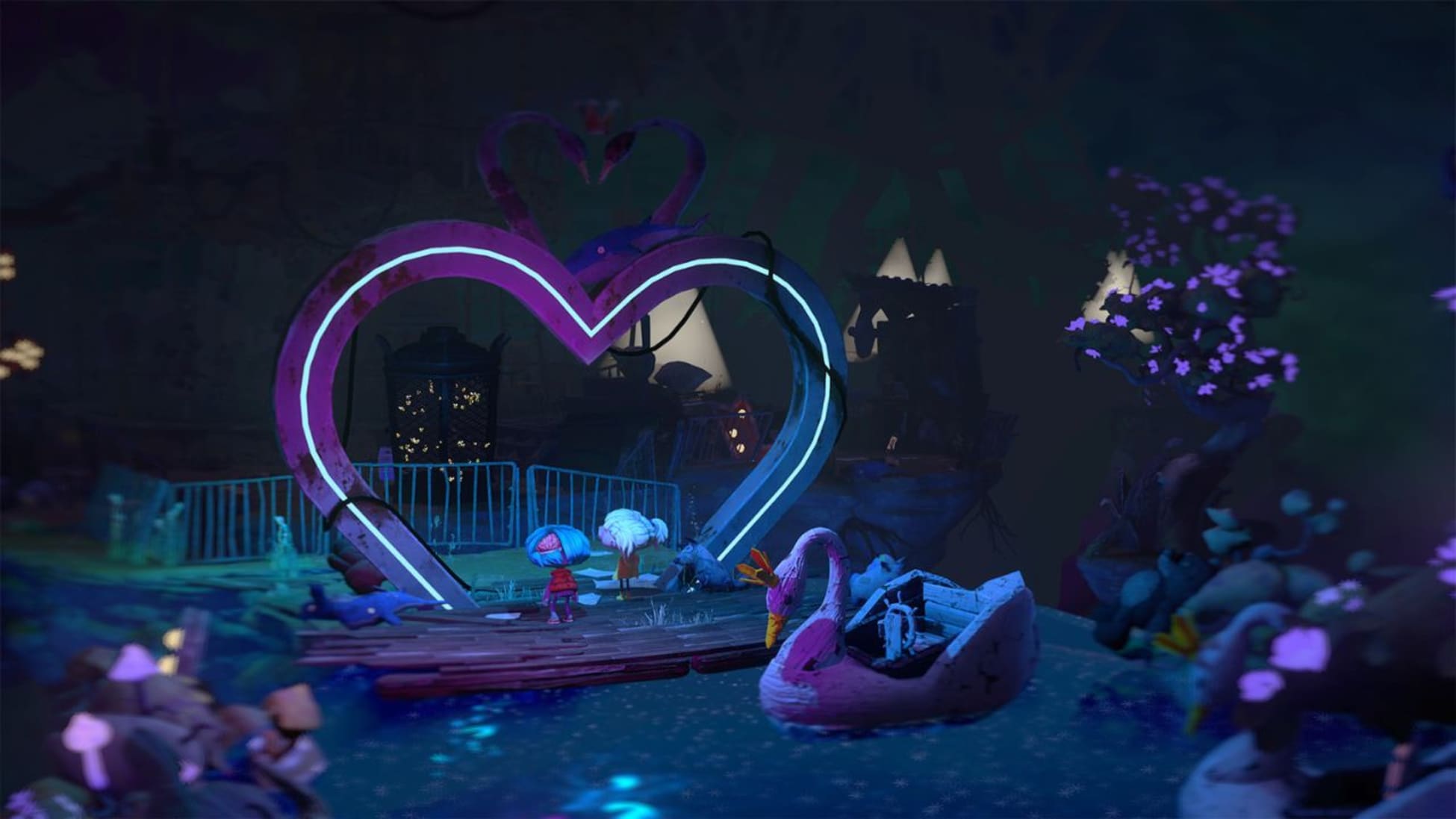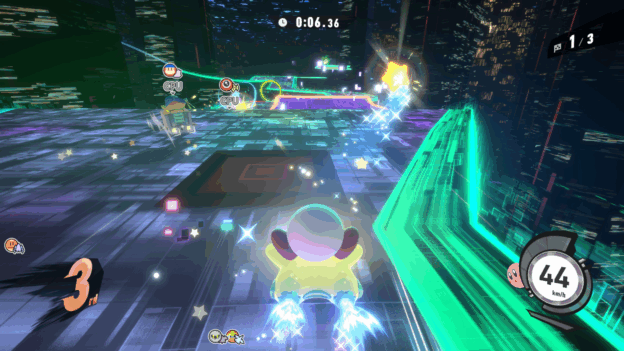Dave The Diver Review – Review

Dave the Diver seemed to have all the markings of this year’s summer sleeper hit. Originally released following a successful kickstarter, the game hit PC earlier this year and was praised loudly as a refreshing indie game that worked particularly well on platforms like the Steam Deck. Thankfully Switch owners didn’t have to wait long and now Dave has cannonballed onto Nintendo’s hybrid device. Combining several genres into one fantastic package, Dave the Diver had me hooked from the very beginning and is an experience that I would recommend to anyone in a heartbeat.
Dave is an old diver coming out of retirement at the behest of his business partner Cobra, who has set up shop near the Blue Lagoon–quite literally, because he has opened a sushi restaurant that prides itself on only using locally sourced ingredients. Of course, the one who has to catch the meal of the day is Dave. As you plunge into the Blue Hole, you’re armed with a harpoon gun and an oxygen tank. Your goal is simple: catch a wide variety of aquatic wildlife during the day that can be chopped up and served to customers at night.
Let’s focus on the diving aspect first. This part of the game has a pretty straightforward loop: each in-game day you get to go on two diving excursions and collect fish and other objects from the seafloor. You either successfully come back up with a large quantity of fish and collectibles or you run out of oxygen and only get to bring a single item back up to shore with you.
Controlling Dave starts out feeling quite sluggish, but thankfully you’re quickly able to upgrade and improve your gear over time or find helpful items in underwater containers. Fish are either caught by reeling them in with your harpoon-gun, or by actually dealing damage to them with a variety of weapons. There are melee weapons like tennis rackets, baseball bats, and your trusty knife, but you’re also able to find and purchase shotguns, tranquilizer darts, and pistols. The catch–pun intended–is that damaging your fish with these traditional weapons makes them less useful for cooking. This means that there’s always a delicate balance between deciding to either take a fish out because it poses a threat, or trying your hardest at reeling them in.
While being underwater there is of course much more to discover than just fish. It’s not long after you begin with your diving expeditions that you are contacted by researchers. These characters want you to go out and find relics from an ancient civilization, or specific fish to write their papers on. In turn, this also causes other characters to respond to your actions, such as a wildlife protection group showing up when you attract their attention after blowing up a cave to find more relics. What is particularly impressive here is that the dives you go on aren’t randomly generated, but the hole always follows a similar pattern. You’d think this would get repetitive, but what makes and keeps Dave the Diver so intriguing is that every milestone you pass either rewards or surprises you. For example, if you happen to go on a successful dive that provides a lot of gold, you can spend it to upgrade your suit and gear for better dives. But even after unsuccessful dives, in particular because sharks can be quite aggressive, there are usually new character interactions or mission objectives introduced that can still be completed. This keeps the game feeling fresh, especially once you get to go to deeper levels of the Blue Lagoon. The best comparison is probably a game like Steamworld Dig 2, where you are intrinsically encouraged to keep exploring the depths beneath and experiment with new weapons and navigational tools.
But the real secret to Dave the Diver’s addictive nature is that your goal isn’t just being a nebulous fish-collector. At the end of each day, you return to your sushi restaurant and select the fish that will be served as meals to paying customers. The level of customization here is astounding, because you aren’t just decorating your restaurant or hiring staff; you are actively responsible for creating the menu. Certain fish are worth much more than others, but even the small fry can be enhanced with additional ingredients like soy sauce, sea salt, and spices. Enhancing these meals costs fish, meaning that you will have a small quantity available on the menu and need to decide whether you want to serve many customers or wring the fewer paying customers dry. And that’s not all: you are also required to assist in serving the restaurant. You need to keep track of pouring drinks, which gives a tipping bonus, you have to keep grinding up wasabi, and you need to clean up the bar itself. You can hire additional staff to assist with the cooking and serving, but they do eat into your profits. It makes for a straightforward, but accessible management game that has a lot of depth to it.
The balancing act on display here, with both the diving and the restaurant segments, makes Dave the Diver super rewarding to return to. Whereas other scavenger-likes such as Subnautica, Rust, and even Minecraft can feel overwhelming in their endlessness, Dave the Diver has an incredible focus. And even if its structure is something that you can appreciate over time, what is immediately striking is its gorgeous visual style. Mint Rocket has crafted an appealing look that somehow is able to balance pixel-art and what look like 3D-models next to one another. It is as if the art-style from pixel games like Pokémon Black and White has been perfected in the animation of its creatures and characters as well as in differentiating the different depths in the Blue Hole. But above all are the phenomenal cutscenes. Blending a love of over the top anime montages with a more traditional pixel-art style that made me always want to watch them, even when the skip button was right there. This is the spice that truly makes Dave the Diver stand out from the crowd of other pixel-art inspired indie games.
That doesn’t mean that all is well under the sea. Load times on the Switch are quite noticeable, especially going between the diving and the restaurant sections. I also found that the game does take a little bit to really get you to understand its diving and serving mechanics. It can be quite overwhelming as four different mechanics are introduced one after another and you only realize how they work together several hours later. There are plenty of collectibles, but keeping track of the Pokédex-like system, the “research these fish”-app and the missions-tab can all blend together, especially in the menu-interface, which is designed to resemble a smartphone filled with apps. I had to take a bit of time to get accustomed to the way in which you plan a goal for yourself. I had actually grown quite experienced with diving and exploration long before I even made it out of the first chapter, because I didn’t realize I had to find a specific item and complete a quest.
But even during dives where the game wasn’t giving me proper direction, I still was enthralled by the experience and wanted to plunge back into the game again and again. I’ll never forget the moments where I was clinging on by single digits on the oxygen tanks and barely made it out alive, over encumbered with fish, or the moments where I was suddenly jumped by a predator and had to evasively dive away and shoot my gun in blind panic. Dave the Diver keeps you on your toes, but the rewards after a successful dive always make me want to play “just one more round.” My sushi restaurant is currently thriving, and I am still looking forward to jumping back in many more times after this review is published.




